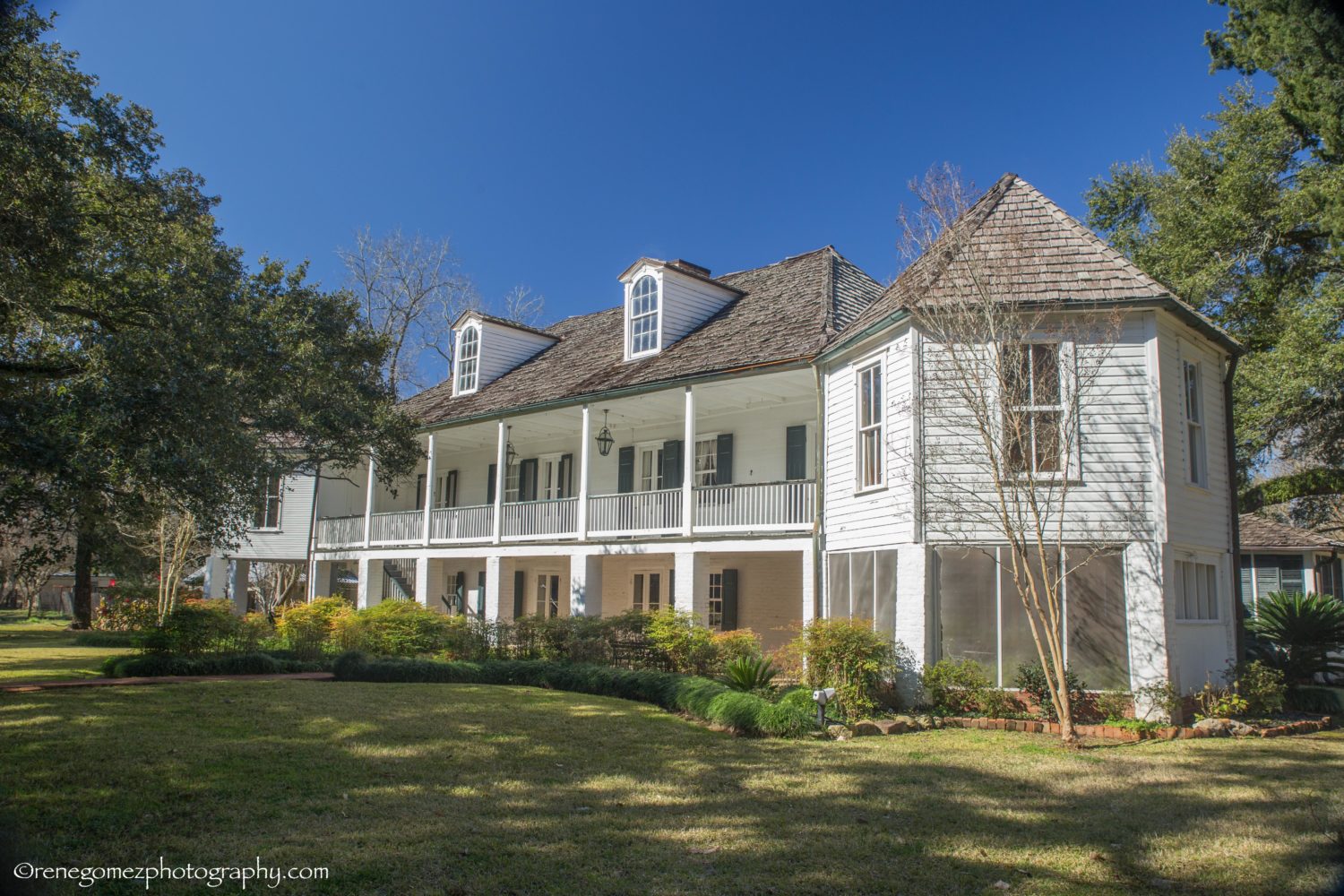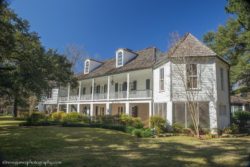Marie Thérèse Coincoin
Coincoin, a formerly enslaved woman freed in colonial Natchitoches, is an icon of American slavery and Louisiana’s Creole culture.

Photo by Rene Gomez via Wikimedia Commons
Melrose Plantation, developed by Louis Metoyer, the son of Marie Therese Coincoin, was declared a National Historical Landmark in 1974.
Marie Thérèse, called Coincoin, a formerly enslaved woman freed in colonial Natchitoches, is an icon of American slavery and Louisiana’s Creole culture. As an enslaved woman who became a free planter and entrepreneur, she symbolizes female self-determination in a world that imposed economic, legal, and sexual subservience on all women. As the mother of two diverse sets of children born between 1759 and 1785, she personifies the way slavery undermined the stability of enslaved families. Her successes and those of her children reflect the critical skills needed by free people of color to navigate political and racial currents in antebellum Louisiana. Two institutions founded by Coincoin’s sons Louis Metoyer and Nicolas Augustin Metoyer—Melrose Plantation and St. Augustine Church on Isle Brevelle—are historical landmarks that preserve Cane River’s Creole culture.
Early Life
Coincoin’s life straddled three political regimes: French, Spanish, and American. Each significantly affected her. At her birth in 1742, Louisiana was a French colony in which the Code Noir governed Africans and their descendants. As a result of the code’s encouragement of families, her African-born parents—known only by their baptismal names François and Marie Françoise—married in a Catholic ceremony in 1736. The Code Noir also enabled them to keep their family intact through twenty-two years of marriage. However, the economic interests of enslavers, also protected by the code, offered few opportunities to escape slavery. Thus, economic realities split Coincoin’s birth family after the deaths of her parents and their enslaver, Manuela Sánchez Navarro y Gomes Mascorro (widow of Louis Juchereau de St. Denis) during an epidemic when Coincoin was sixteen. While the ethnic African origins of Coincoin’s parents go unstated in extant records, the African names they gave to her and her four siblings (Coincoin, Dgimby, Choera, Chocra, and Yancdose) provide clues that linguists are now exploring.
Life in Slavery
French colonial social policies condoned the sexual exploitation of enslaved people like Coincoin, and the subsequent transfer of Louisiana to Spain subjected her to the age-old practice of punishing female victims of that abuse. However, these violations of her person would provide a pathway to freedom.
By 1767 Coincoin had borne five Black children in the household of her godmother and third enslaver, St. Denis’s daughter Marie des Neiges, wife of Manuel de Soto. In dire financial straits because of her husband’s imprisonment in Mexico City, Madame de Soto rented out Coincoin that year to a new arrival at the post, the French bachelor Claude Thomas Pierre Metoyer, to tend his home and tavern. Coincoin bore another ten children to Metoyer, the first five of whom were born into slavery and later manumitted by Metoyer. Prosecuted for these pregnancies by the parish priest, who branded Coincoin a “public prostitute,” she was sentenced to the lash and public humiliation. In the wake of this punishment — which notably was not exacted upon the man she sexually served — Metoyer bought Coincoin her freedom. When he eventually took a legal wife, Metoyer deeded Coincoin his unpatented interest in a small tract of sixty-seven acres, an economic start for her and their younger, free-born children.
Life as a Freedwoman
As a freedwoman Coincoin created an existence that now seems both emblematic and enigmatic. Contrary to modern expectations she displayed no antipathy for the institution of slavery. Like many other freedwomen in Spanish Louisiana, she accepted slavery as an economic and social exigency and used it to create a legacy that has endured across two centuries. Toward this end she was aided by Spain’s legal code, Las Siete Partidas, which granted free land, encouraged manumission, and mandated compulsory emancipation for enslaved people when they were able to purchase themselves via coartacíon or when kinsmen or benefactors offered a fair price. Manipulating these legal and economic systems, Coincoin purchased the freedom of three of her children and three grandchildren; she also obtained a land grant that was vast in acreage, though poor in quality.
With the help of her younger children, Coincoin operated a modest tobacco farm on her original homestead. She trapped wildlife and sold their byproducts at market, and she manufactured medicines, a skill—apparently learned from her African-born parents—for which she and her freed sister, Mariotte, were noted at the Natchitoches post. Eventually Coincoin employed a Spaniard to oversee a vacherie, or cattle ranch, on her land. As her children matured and began their own enterprises, and as her advancing age and the physical effects of fifteen childbirths limited her ability to labor, Coincoin bought and enslaved a young African woman named Marguerite to assist her and, ultimately, two African men named Louis and Harry.
The relationship that developed between Coincoin and these enslaved people perhaps reflected her ambivalence between the culture she had embraced as a Louisiana native and the African traditions her parents would have taught her to respect. As a seemingly devout Catholic, she made certain that each child borne by Marguerite was baptized the next time a priest visited their outlying plantation. However, contrary to the practice of other Catholic enslavers of her region, she did not force Christianity upon the African born people she enslaved. The Congo-born Louis did choose baptism two years after he arrived. The Congo-born Marguerite waited at least twelve years; and Harry, “of the Nation Quissay,” was never baptized at Natchitoches.
As Louisiana transitioned into the American regime, Coincoin’s life changed radically due to both politics and her age. The more restrictive land policies of the United States curtailed further expansion of her operations and limited the opportunities available to her family. The result was a riff of land exchanges among her children and physical relocations to consolidate individual enterprises. In 1807 Coincoin suspended her vacherie, invested in a third tract adjoining her homestead, turned over those farms to two sons, and moved southward to Rivière aux Cannes (Cane River) to live amid her offspring—freed individuals upriver and enslaved individuals downriver from her on the plantations of their enslavers.
By Coincoin’s death about March 1817, she had accumulated an estate of more than a thousand acres and sixteen enslaved people—thirteen of them the children and grandchildren of Marguerite. Coincoin’s own offspring, in the decades that followed, built upon her foundation, creating an agricultural empire that made them the wealthiest free family of color in the nation.
Legacy
Coincoin’s legacy has been commemorated at two historical sites along Natchitoches’s Cane River, the seat of an enduring Creole society preserved by her Metoyer descendants. Melrose Plantation, developed by Coincoin’s son Louis Metoyer but often misattributed to her, was declared a National Historical Landmark in 1974. St. Augustine Parish, whose original church was built by son Augustin Metoyer in 1829 with Louis’s help, is the site of an annual October fair that celebrates Creole heritage. Ongoing archaeological studies of Coincoin’s farmstead have located the site of an earlier residence, whose material remains date to her lifetime and likely represent some vestiges of her occupancy. Scholarship documenting Coincoin’s last decade places her final residence at the Rivière aux Cannes archaeological site known as 16NA785, and the evidence suggests she was laid to rest at nearby 16NA789 (Shallow Lake Cemetery). Preliminary studies at the unnamed 16NA1785 site have found a “substantial occupation” there during Coincoin’s last decade, thereby opening new ground for scholars to develop a richer interpretation of her life and her contributions to the African diaspora.
